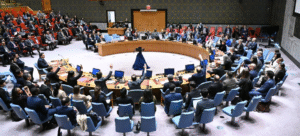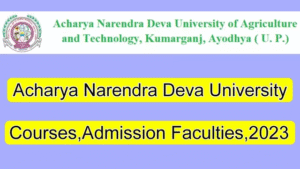The Walls Within Our Screens: How Algorithmic Echo Chambers Shape Our Worldview
In the burgeoning digital age, information flows with unprecedented speed and volume, promising a more connected and informed global citizenry. Yet, beneath the surface of this seemingly boundless access lies a subtle but powerful force shaping our individual and collective understanding of the world: the algorithmic echo chamber. Driven by personalized feeds curated by sophisticated algorithms, we are increasingly confined within digital spaces that reinforce our existing beliefs, limiting exposure to diverse perspectives and potentially fracturing societal discourse. We will explore the mechanics of filter bubbles and echo chambers, examining their profound impact on our individual worldviews and the broader landscape of societal understanding.

The Architecture of Isolation: Understanding Filter Bubbles
At the heart of the algorithmic echo chamber lies the concept of the “filter bubble,” a term coined by internet activist Eli Pariser. These digital enclosures are constructed by algorithms that learn our preferences based on our online behavior – the articles we read, the videos we watch, the people we follow, and the products we engage with. This data is then used to personalize our feeds, presenting us with content that aligns with our existing views and interests, effectively filtering out information that might challenge or contradict them. While seemingly designed to enhance user experience by providing relevant content, these filters inadvertently create a self-reinforcing loop, limiting our exposure to the multifaceted reality of the world.
The Amplification of Belief: The Formation of Echo Chambers
When filter bubbles become pervasive, they can evolve into “echo chambers.” Within these digital spaces, individuals are primarily exposed to information and opinions that resonate with their own, often amplified by like-minded individuals. This constant reinforcement can lead to a hardening of beliefs, making individuals less receptive to alternative viewpoints and more susceptible to confirmation bias – the tendency to seek out and interpret information that confirms pre-existing notions. The absence of dissenting voices within these chambers can create a false sense of consensus, leading individuals to believe their perspectives are more widely held than they actually are.
The Erosion of Nuance: Impact on Individual Understanding
The confinement within algorithmic echo chambers has significant consequences for individual understanding. By limiting exposure to diverse perspectives, these digital environments can hinder our ability to develop a nuanced and comprehensive view of complex issues. We may become less aware of the validity of opposing arguments, less equipped to engage in constructive dialogue, and more prone to oversimplification. The lack of intellectual friction that comes from encountering differing viewpoints can also stifle critical thinking skills, making us less likely to question our own assumptions and biases.
Fracturing the Public Sphere: Consequences for Societal Discourse
The proliferation of echo chambers poses a serious threat to healthy societal discourse. When individuals are increasingly segregated into separate information realities, it becomes challenging to find common ground and engage in productive conversations about shared challenges. This fragmentation can exacerbate polarization, as different groups develop increasingly divergent understandings of facts and values. The inability to engage with opposing viewpoints in a meaningful way can hinder social cohesion, impede progress on critical issues, and even contribute to societal unrest.
Breaking Free: Navigating Beyond the Algorithmic Walls
While the algorithmic forces shaping our digital experiences are powerful, they are not insurmountable. Cultivating media literacy, actively seeking out diverse sources of information, and consciously engaging with perspectives that challenge our own are crucial steps in breaking free from the confines of echo chambers. Technology itself can also play a role, with the development of algorithms designed to promote viewpoint diversity and expose users to a wider range of perspectives. Ultimately, fostering a more informed and understanding society requires a conscious effort from individuals, platforms, and educators to navigate the digital landscape with critical awareness and a commitment to intellectual openness.
Conclusion: Reclaiming a Shared Reality in the Digital Age
The algorithmic echo chamber represents a significant challenge to both individual understanding and societal cohesion in the digital age. While personalized feeds offer convenience and relevance, their unintended consequence of creating filter bubbles and reinforcing existing beliefs can lead to intellectual isolation and fractured public discourse. Recognizing the mechanics and impact of these digital enclosures is the first step towards mitigating their negative effects. By actively seeking diverse perspectives, fostering critical thinking, and demanding greater transparency and responsibility from the platforms that shape our information environment, we can strive to build a more informed, nuanced, and ultimately, a more unified understanding of the complex world we inhabit.




















